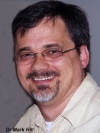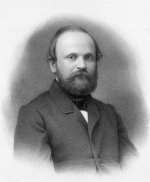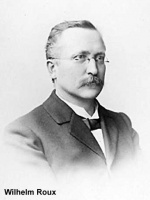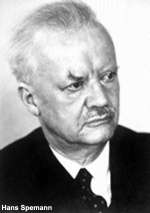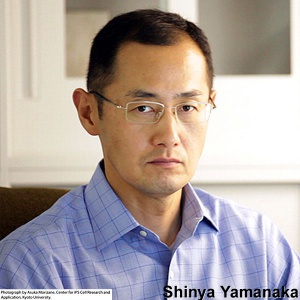History - Embryologists: Difference between revisions
From Embryology
No edit summary |
|||
| Line 137: | Line 137: | ||
==Viktor Hamburger (1900 - 2001)== | ==Viktor Hamburger (1900 - 2001)== | ||
==Shinya Yamanaka (1962 - )== | |||
[[File:Shinya_Yamanaka.jpg|thumb|Shinya Yamanaka]] | |||
Professor Yamanaka has had a key role to play in identifying the specific 4 factors alone required to transform a cell from adult tissues into a stem cell. These 4 factors have also been called "Yamanaka Factors" and the stem cells formed, by their introduction or expression, are called "induced Pluriopotential Stem Cells" (iPS). | |||
:'''Links:''' [[Embryology_History_-_Shinya_Yamanaka|Shinya Yamanaka]] | [[Stem_Cells_-_Induced|Induced Stem Cells]] | [[Stem Cells]] | [http://www.nobelprize.org/nobel_prizes/medicine/laureates/2012 The Nobel Prize in Physiology or Medicine 2012] | |||
Revision as of 12:09, 9 October 2012
Introduction
| Embryologists: William Hunter | Wilhelm Roux | Caspar Wolff | Wilhelm His | Oscar Hertwig | Julius Kollmann | Hans Spemann | Francis Balfour | Charles Minot | Ambrosius Hubrecht | Charles Bardeen | Franz Keibel | Franklin Mall | Florence Sabin | George Streeter | George Corner | James Hill | Jan Florian | Thomas Bryce | Thomas Morgan | Ernest Frazer | Francisco Orts-Llorca | José Doménech Mateu | Frederic Lewis | Arthur Meyer | Robert Meyer | Erich Blechschmidt | Klaus Hinrichsen | Hideo Nishimura | Arthur Hertig | John Rock | Viktor Hamburger | Mary Lyon | Nicole Le Douarin | Robert Winston | Fabiola Müller | Ronan O'Rahilly | Robert Edwards | John Gurdon | Shinya Yamanaka | Embryology History | Category:People | ||
|
Martin Heinrich Rathke (1793 – 1860)
| Rathke was a German embryologist and anatomist best known today for "Rathke's pouch", a transient folding surface ectoderm from roof of the oral cavity that will form the anterior pituitary (hypophysis). in later development the connection with the oral cavity is lost.
|

Martin Rathke |
John Quain (1796 - 1865)
Johannes Peter Müller (1801 - 1858)
Julius Kollmann (1834 - 1918)
| Kollmann was a German embryologist and Professor extraordinarius, Munich University, 1870–8; professor of anatomy, Basel University, 1878 – 1913. Images from Kollmann's 2 volume Atlas of the Development of Man (Handatlas der entwicklungsgeschichte des menschen) were extensively reused in other embryology textbooks and are also the basis of many modern drawings.
|
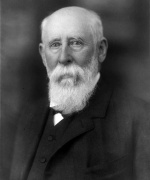
Julius Kollmann |
Robert Remak (1815 - 1865)
Wilhelm Roux (1850 – 1924)
Wilhelm His (1831 - 1904)
| His was a noted Swiss anatomist and embryologist educated in Basel and Bern, in Berlin. His teachers in Würzburg were Johannes Peter Müller (1801-1858) and Robert Remak (1815-1865) and in Prague and Vienna with Rudolf Virchow (1821-1902). All three of these researchers were major 19th century embryologists.
Wilhelm His was a Swiss anatomist and embryologist.
|
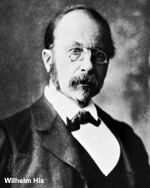
Wilhelm His |
Oskar Hertwig (1849 – 1922)
| Hertwig was a German embryologist, Professor extraordinarius of Anatomy and Comparative Anatomy, Director of the II. Anatomical Institute of the University of Berlin.
|
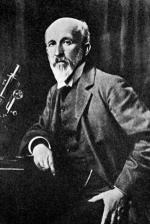
Oskar Hertwig |
Franklin P. Mall (1862 - 1917)
| Mall is most remembered for his work done at the Department of Embryology at the Carnegie Institute of Washington. He began collecting human embryos while a postgraduate student in Lepzig with Wilhelm His, but didn't receive the first Carnegie specimen until his position at Johns Hopkins University.
|
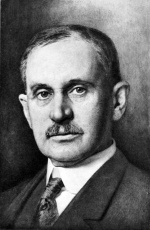
Franklin Mall |
George L. Streeter (1873 – 1948)
| Streeter was an American embryologist, holding many key positions during embryology discoveries in the early period of last century, and also associated with the establishment of the Carnegie Institution.
|

George Streeter |
Santiago Ramón y Cahal (1852 - 1934)
| Cahal was a Spanish pathologist and histologist and one of the early neuroscientists. He received the Nobel Prize in Physiology or Medicine.
|
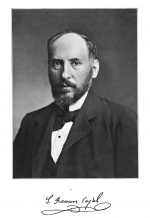
Ramon y Cahal |
Hans Spemann (1869 - 1941)
Viktor Hamburger (1900 - 2001)
Shinya Yamanaka (1962 - )
Professor Yamanaka has had a key role to play in identifying the specific 4 factors alone required to transform a cell from adult tissues into a stem cell. These 4 factors have also been called "Yamanaka Factors" and the stem cells formed, by their introduction or expression, are called "induced Pluriopotential Stem Cells" (iPS).
- Links: Shinya Yamanaka | Induced Stem Cells | Stem Cells | The Nobel Prize in Physiology or Medicine 2012
Glossary Links
- Glossary: A | B | C | D | E | F | G | H | I | J | K | L | M | N | O | P | Q | R | S | T | U | V | W | X | Y | Z | Numbers | Symbols | Term Link
Cite this page: Hill, M.A. (2024, May 6) Embryology History - Embryologists. Retrieved from https://embryology.med.unsw.edu.au/embryology/index.php/History_-_Embryologists
- © Dr Mark Hill 2024, UNSW Embryology ISBN: 978 0 7334 2609 4 - UNSW CRICOS Provider Code No. 00098G
